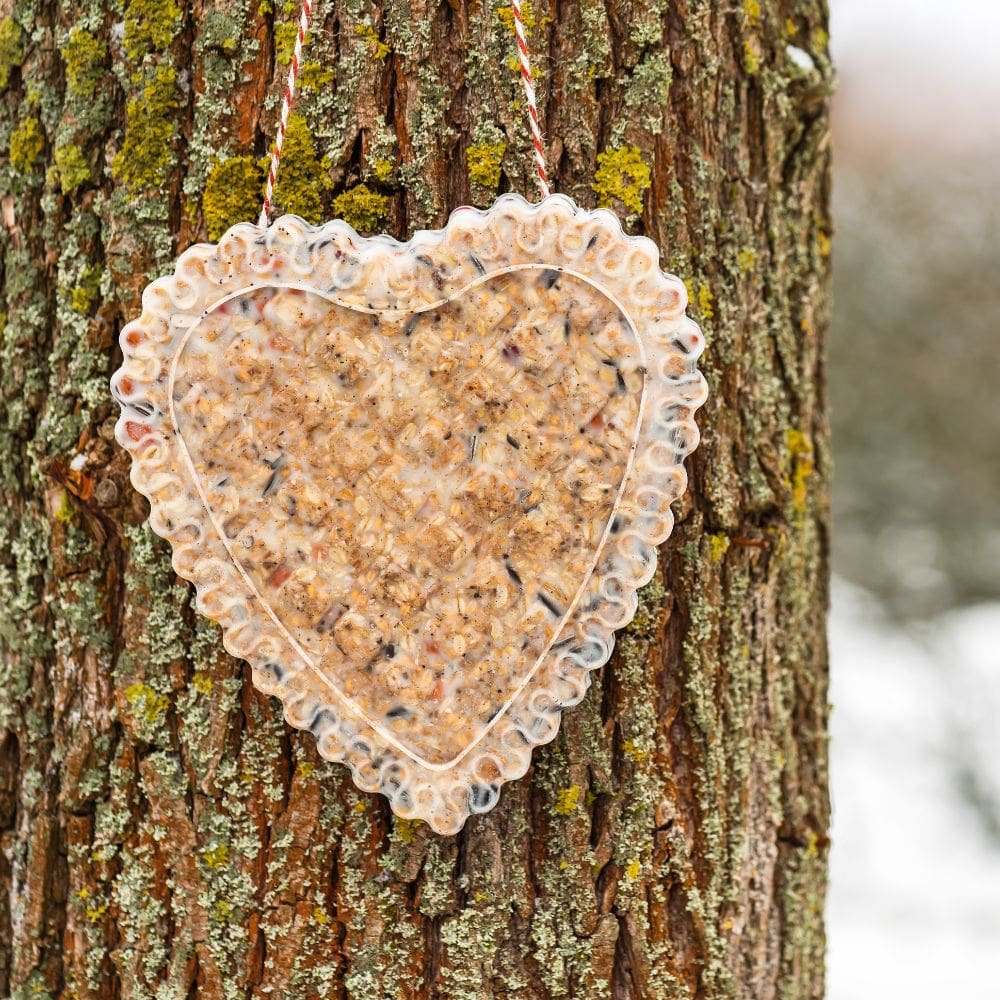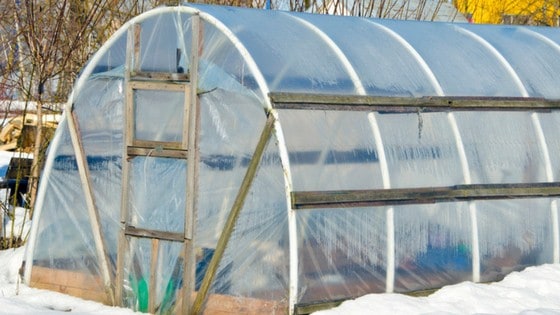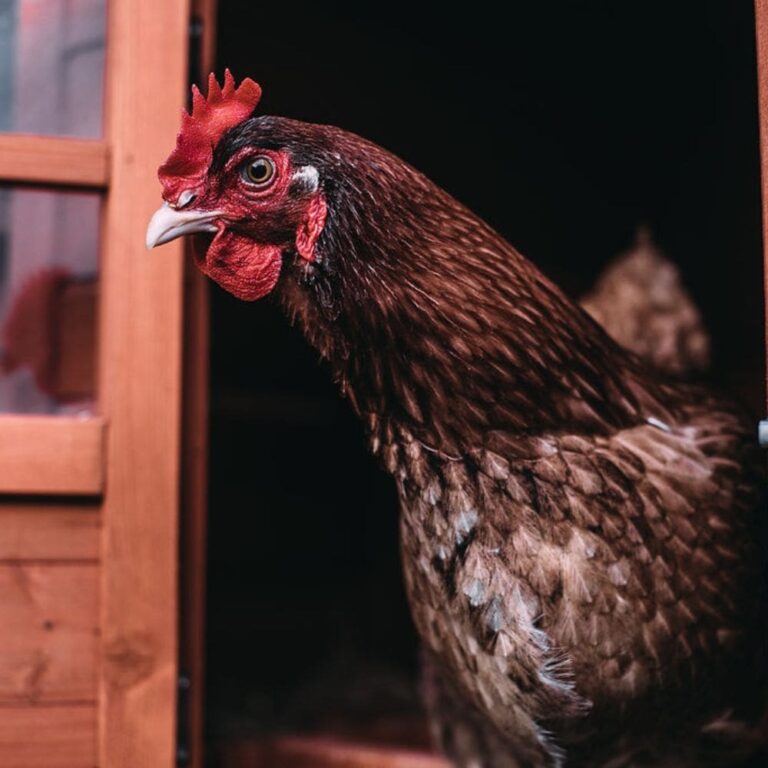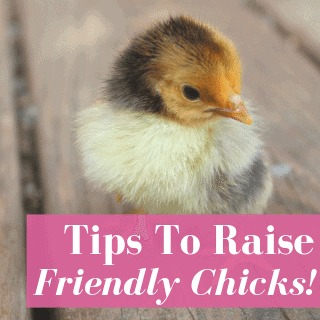Crafting homemade suet cakes for chickens is a simple way to boost the fat in your flock’s diet while giving them a way to stay occupied. Plus you might be wondering what a suet cake even is.
A question I get is “What are suet cakes anyway?” I’ll answer that below.
A frequent questions I get is “Can chickens eat suet cakes?,” and not only is the answer a definitive “YES!” but feeding DIY suet cakes to chickens can help reduce bad behavior and stress from being confined in a coop all day.
Regardless of the season, your flock will benefit from suet cakes. In the winter they help provide needed energy and in the summer they can help keep your “babies” cool.
And they’re always a total hit! When my flock catches sight of their suet cakes, the light comes back in their eyes as they realize they’re about to have a blast.
Needless to say, as soon as I drop the treats in their chicken feeders, it’s game on.

Table of Contents (Quickly Jump To Information)
What Is Suet?
Suet is the hard, white fat found on the kidneys and loins of beef, lamb, and mutton. Suet cakes, however, have morphed over time and other fats are now regularly used to make them. Read on to learn about that.
Chicken Fat Fuel
I like to use coconut oil when I make homemade suet cakes for chickens because it’s good for them (with good antibacterial qualities), it’s malleable, and it holds the corn, oats, and other things I add fairly well.
It’s also a nice source of healthy fat, particularly in winter, when you need to worry more about their calorie intake in the cold.
If you’re feeling creative, you can make homemade suet cakes with bacon grease or other grease leftover from cooking.
You can use grease by itself, but I still like to mix it with coconut oil (especially good for winter, when the extra protein will help the chickens out).
Remember, however, that these are treats – not a replacement for a good basic diet of non-GMO layer feed.
I can guarantee your chickens will love your homemade suet and come running whenever they see you have them!
Here are some of the best homemade suet cake for chickens recipes I’ve found that will help your chickens improve their health while providing a treat, and I’m happy to share them with you!
Suet Cake Ingredients (Add Ins)
In addition to the grease or oil, you can pretty much add anything that’s fine for chickens to eat. Some easy choices are:
- Cracked corn or fresh corn
- Oatmeal
- Chopped unsalted peanuts or other nuts
- Minerals (like these)
- Dry peas
- Wheat berries
- Lentils
- Flax seeds (improves omega-3s in eggs)
- Scratch mix (here is option of scratch with herbs)
- Sunflower seeds (high in fat)
- Dried fruit
- Raisins
- Millet
- Spices (like cayenne)
- Meal worms (try these)
I like to add more corn and peanuts in the winter months for an energy boost to help them through the night.
Another option is to add pea sprouts, microgreens, etc, which is especially easy to do if you use coconut oil.
You can also add fresh or dry herbs. Oregano, sage, and thyme are good options that are also easy to source. We make several herb blends that can be easily added. They are specially formulated for chickens and provide many health benefits. Check them out here.
What Shape Should They Be?
As for shape, you have endless options.
I like to use a muffin tin; we have a lot of chickens, and a single large block would get eaten by a few, leaving the rest of our chickens wanting.
So, the muffin tin makes sure everyone gets a piece of the suet cakes.
You can also use a shallow pan, large candy molds, or anything that fits easily into your freezer. Many folks have a great deal of fun using different molds in the shape of a heart or pumpkin, Christmas tree, and so on.
How To Make Homemade Suet Cakes For Chickens
1. Choose a pan or mold
Make sure the pan or mold is deep enough to accommodate all the coconut oil you plan to use.
2. Melt the grease or oil
Melt the grease or oil over low heat, just until melted (especially important if using sprouts).
Coconut oil has a melting point of 77 degrees, so it only needs to be warmed until it starts to melt. Any more, and you might destroy some of the beneficial properties of the oil, as well as potentially cooking some of your additives (and altering their nutrients).
This is particularly key if you plan to use sprouts – when they’re fresh, sprouts have more nutrients. But if they cook in hot oil, your chickens will enjoy them less.
3. Stir in add ins
I like using regular oatmeal. People always seem to give it to us, and this is a simple way to use it up that’s also a nice treat for our backyard chickens.
Grind or chop up whatever you’re adding to your homemade suet cakes to make sure the entire block doesn’t crumble, and if you use peanuts, make sure they’re unsalted.
You can also alter your recipe depending on the season, adding more corn in the winter when energy is important, and flax seeds in the summer when they’re laying eggs again.
4. Pour mixtures into pans or molds
Fill to the top, since the coconut oil won’t expand in the freezer. You can add some extra oatmeal or corn on the top as well.
Remember that the pan or molds will be hot so be careful picking it up and moving it.
5. Freeze until solid
Time will vary depending on your freezer. I like to make homemade suet cakes for chickens in the evening, then let them freeze overnight.
6. Remove suet cakes from pan or mold
If you need to, you can run a knife around the edge of the pan, but I’ve found that’s less effective than simply turning the pan over and tapping on the bottom.
7. Feed your chickens
Now is the moment we’ve all been waiting for! Present these gifts to your chickens and watch them enjoy!
If you are using coconut oil keep in mind that it has a low melting point, so don’t remove them from the freezer until you’re ready to feed them or they’ll be a slimy, melty mess. I’ve found they start to melt as soon as I bring them outside.
Summary
Yes, it’s as easy as that! Making homemade suet cakes is easy – and it’s a good way to fight boredom, reduce bad behaviors, and make sure your hens are getting extra calories!
Have fun with it! Try different add ins and different shapes (the chickens won’t care about the shape but it can bring you joy)!
Maat van Uitert is a backyard chicken and sustainable living expert. She is also the author of Chickens: Naturally Raising A Sustainable Flock, which was a best seller in it’s Amazon category. Maat has been featured on NBC, CBS, AOL Finance, Community Chickens, the Huffington Post, Chickens magazine, Backyard Poultry, and Countryside Magazine. She lives on her farm in Southeast Missouri with her husband, two children, and about a million chickens and ducks. You can follow Maat on Facebook here and Instagram here.





![Keep Your Chickens Safe On Halloween! [Podcast]](https://thefrugalchicken.com/wp-content/uploads/2016/10/chickens-halloween.jpg)
![Essential Oil Coop Sprays for Healthier Backyard Chickens [Podcast]](https://thefrugalchicken.com/wp-content/uploads/2017/01/essential-oil-coop-sprays.jpg)
Thank you so much for your recipe. I love to spoil my pullets and my roos with with treats. I can’t wait to run to the store to get the ingredients. Thanks. Patricia Evans
You’re welcome – I’m sure they’ll love them!
This will be my first winter to keep a few hens so thank you so much for your ideas and help in knowing how to be prepared for the experience. We get lots of snow here so plan to let them out into our small greenhouse in the day time.
can you use this recipe for wild birds? I don’t have chicks, but in the winter I like to feed the birds and watch them through my window. Purchased suet is so expensive here. PS…I love your blog…just discovered it via this pin on pinterest and have managed to looose myself in your blog fro the last hour!
Hi Jackie – thanks for the wonderful compliment! Yes, you can use these suet cakes for wild birds.
How often do you give these to your chickens? Once a week, everyother day, daily? Not sure how often to offer these as treats.
You can offer them as much or as little as you like. I do it infrequently, maybe once a week or so. More in the summer if it’s hot, and I want them to have a frozen treat. Daily might be a bit too much since you want them to be hungry for their feed, but once a week is a good time frame to shoot for.
Do i use cooled corn, or raw?
I use cracked (dried) corn, but you can use cooked and raw also!
Thanks for the great ideas! I’m definitely making these for my hens!